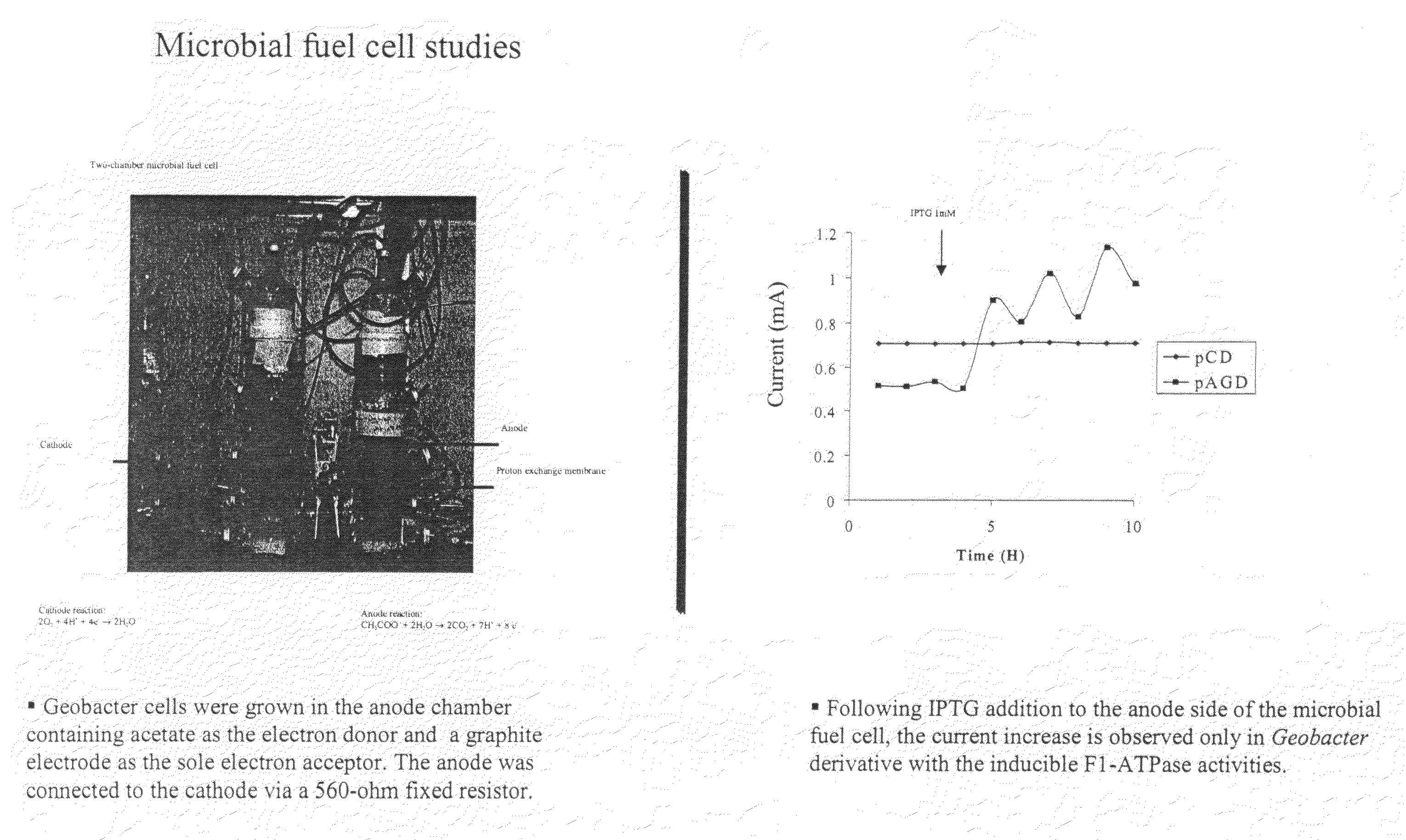Compositions and Methods for Bioelectricity Production
a bioelectricity and composition technology, applied in the field of compositions and methods for bioelectricity production, can solve the problems of inability to use open environment electricity generation, microorganism oxidation, and even toxic mediators, and achieve the effects of increasing atp consumption, reducing atp synthesis, and promoting atp consumption
- Summary
- Abstract
- Description
- Claims
- Application Information
AI Technical Summary
Benefits of technology
Problems solved by technology
Method used
Image
Examples
example i
Engineering Geobacter sulfurreducens for Enhanced Electricity Production
[0033]Previous studies have reported that Geobacteraceae can harvest electricity from waste organic matter by oxidizing organic compounds to carbon dioxide coupled to electron transfer onto electrode surfaces. Although the conversion of organic matter to electricity in this manner can be efficient, the process is slow. Furthermore, Geobacter species have a selective number of electron donors they can utilize and thus fermentative organisms are required in order to convert complex organic substrates to the organic acids that Geobacter species can oxidize. This Example describes the engineered expansion of Geobacter species substrate range to accelerate their rate of electron transfer in order to enhance electricity production.
[0034]The developmental design for engineered expansion of substrate range employed a genome-based in silico model of the physiology of Geobacter sulfurreducens. For example, glycerol has a ...
PUM
 Login to View More
Login to View More Abstract
Description
Claims
Application Information
 Login to View More
Login to View More - R&D
- Intellectual Property
- Life Sciences
- Materials
- Tech Scout
- Unparalleled Data Quality
- Higher Quality Content
- 60% Fewer Hallucinations
Browse by: Latest US Patents, China's latest patents, Technical Efficacy Thesaurus, Application Domain, Technology Topic, Popular Technical Reports.
© 2025 PatSnap. All rights reserved.Legal|Privacy policy|Modern Slavery Act Transparency Statement|Sitemap|About US| Contact US: help@patsnap.com



